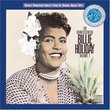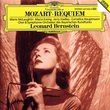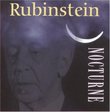| All Artists: Johannes Brahms, Daniel Barenboim, Chicago Symphony Orchestra Title: Brahms: Symphony No. 2; Tragic Overture Members Wishing: 0 Total Copies: 0 Label: Elektra / Wea Release Date: 2/13/1996 Genre: Classical Style: Symphonies Number of Discs: 1 SwapaCD Credits: 1 UPC: 745099519223 |
Search - Johannes Brahms, Daniel Barenboim, Chicago Symphony Orchestra :: Brahms: Symphony No. 2; Tragic Overture
 | Johannes Brahms, Daniel Barenboim, Chicago Symphony Orchestra Brahms: Symphony No. 2; Tragic Overture Genre: Classical
Like many composers, Brahms loved to work in the country during holidays; he wrote the Tragic Overture in 1880 in Bad Ischl, the Second Symphony in 1877 in Pörtschach, a lovely village on the Wörthersee. Unlike t... more » |
Larger Image |
CD Details
Synopsis
Amazon.com
Like many composers, Brahms loved to work in the country during holidays; he wrote the Tragic Overture in 1880 in Bad Ischl, the Second Symphony in 1877 in Pörtschach, a lovely village on the Wörthersee. Unlike the First Symphony, finally completed in 1876 after many laborious years, the Second was composed in one summer in an unbroken flow of inspiration; its peaceful, pastoral serenity and jubilant high spirits reflect Brahms's contentment in the countryside, where he also wrote his Violin Concerto the following summer. His friend Theodore Billroth, physician and amateur pianist, described the symphony as "all rippling streams, blue skies, sunshine, and cool, green shadows." In the Tragic Overture, composed, according to Brahms, merely to satisfy the melancholy side of his nature, the dark, dramatic tension is immediately established in the powerful major-minor opening; the relentless syncopated rhythmic accompaniment acts like a driving, surging undertow. The tension is relieved by a warm, lyrical, ardent second theme, but the agitation prevails in a turbulent coda. The performance is grandly conceived, flowing yet expansive, flexible and expressive; Barenboim projects a strong personal response to the music in all its changing moods, yet lets it speak for itself. The playing is wonderful, but the recorded sound exaggerates the dynamics. --Edith Eisler
Similarly Requested CDs
| Neil Diamond Live in America Genres: Pop, Rock, Broadway & Vocalists Label: Sony | |
| Nat King Cole Unforgettable Nat King Cole Genres: Jazz, Pop, Broadway & Vocalists Label: Capitol | |

 Track Listings (5) - Disc #1
Track Listings (5) - Disc #1![Vivaldi's Ring of Mystery [With CD]](https://nationalbookswap.com/cd//m/30/0730/80730.jpg)








